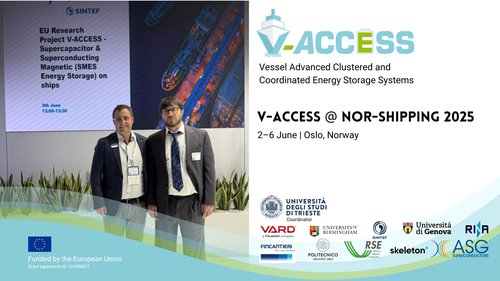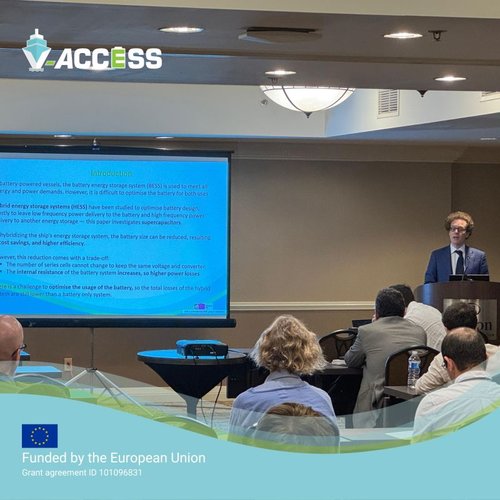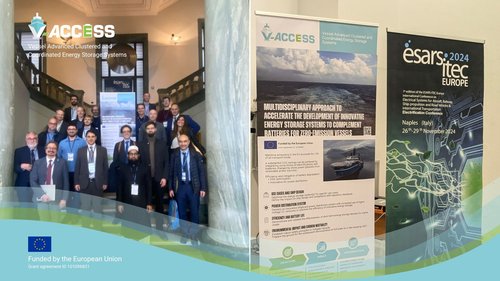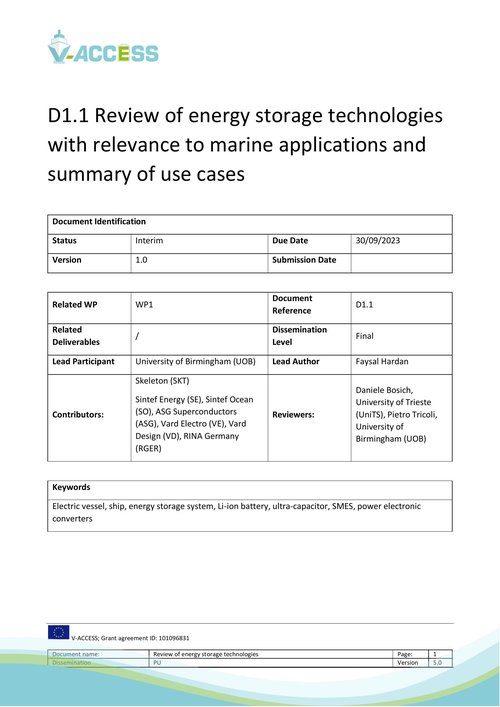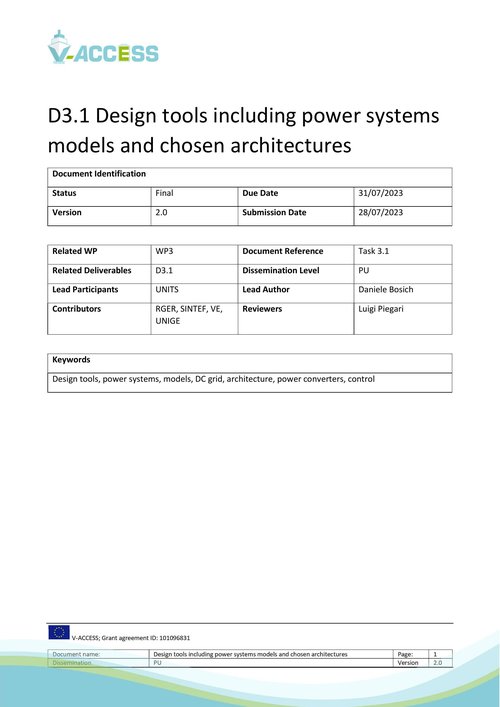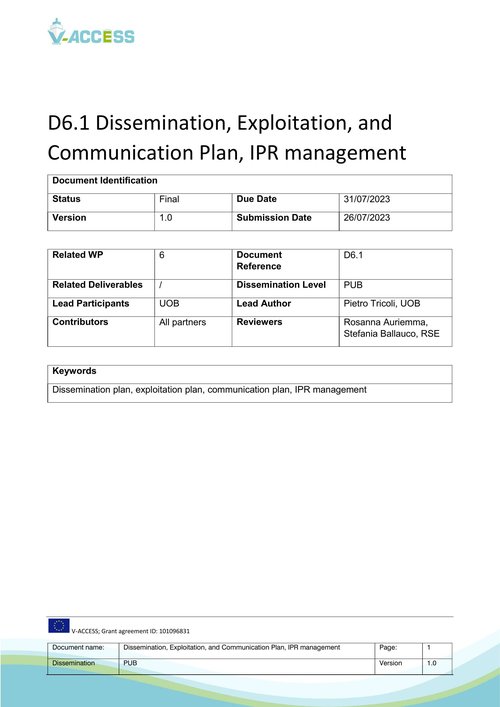
V-ACCESS
Vessel Advanced Clustered and
Coordinated Energy Storage Systems
Multidisciplinary approach to accelerate the development of innovative
energy storage systems to complement batteries for zero-emission vessels
-

Objectives
1. Accelerate the development of innovative energy storage systems
2. Validation process
3. Reach TRL 5 -

Impact
V-Access project industrialization enhances the development of innovative energy storage systems to complement batteries for zero-emission vessels.
-

Implementation
Innovative energy storage systems to complement batteries for zero-emission vessels
Project
-
CALL
HORIZON-CL5-2022-D5-01-02 - Innovative energy storage systems on-board vessels (ZEWT Partnership)
-
DURATION
36 months (1/2/2023-31/1/2026)
-
FUNDING SCHEME
RIA
-
TOTAL BUDGET
€ 4.237.872,50 (€ 5.000.000,00 with Innovate UK contribution)
-
PARTNERS
14 from 6 European countries
-
TRL
from 3 to 5

Project Partners
Coordinator: University of Trieste
14 partners from 6 European countries:
UK, Italy, Norway, Estonia. Germany, Greece
- 4 top level Academic Institutions and 3 Research and Technology Organisations with expertise in the field of Energy Storage, Power Electronics, Shipboard Power Systems, Marine Transport, Marine vessels;
- 3 shipbuilders, with expertise in a large range of vessels and in electrical system integration to ensure that a real industrial and commercial vision of the project outcomes;
- 2 industrial technology providers of energy storage devices;
- 2 ship classification societies with in-depth expertise on marine standards and independent assessment and certification of safety risks and methodologies for risk mitigation.

Main Objectives
-
1.
Multidisciplinary approach to accelerate the development of innovative energy storage systems to complement batteries for zero-emission vessels.
-
2.
Validation process will benefit from existing demonstrator/simulation facilities:
- ETEF lab (University of Trieste): power HiL/full scale test demonstrator with a DC microgrid emulating with high-fidelity a shipboard power distribution network
- ShIL lab (University of Genova): control HiL experiments.
-
3.
The proposed technologies have been already validated at lab scale (TRL 3) on previous EU, national and international projects and will reach TRL 5 by the end of the project.
Project technical Work Packages
-
WP1
Analysis of vessels and energy storage characteristics
Optimise the energy storage system(s) for specific use cases and identify synergies with batteries.
-
WP2
Physical integration aboard the identified storage systems
Provide an in-depth assessment on how the proposed energy storage solution have an impact on ship design and can be compliant with regulatory standard
-
WP3
Functional electrical integration
Develop an innovative shipboard power distribution system with increased use of higher voltage DC networks to optimise the efficiency of innovative energy storage. Demonstrate the effectiveness of short-term energy storage devices for marine usage. Validate the effectiveness of short-term energy storage devices for marine usage.
-
WP4
Techno-economic and Environmental assessment against BESS
Assess the environmental impact and carbon neutrality using internationally recognised methodologies
-
WP5
Steps required to increase the TRL of the integration of storage technologies
Establish robust safety principles to mitigate hazards. Prepare the ground for the subsequent demonstration at full-scale on a real vessel by 2027
Reports
View all











